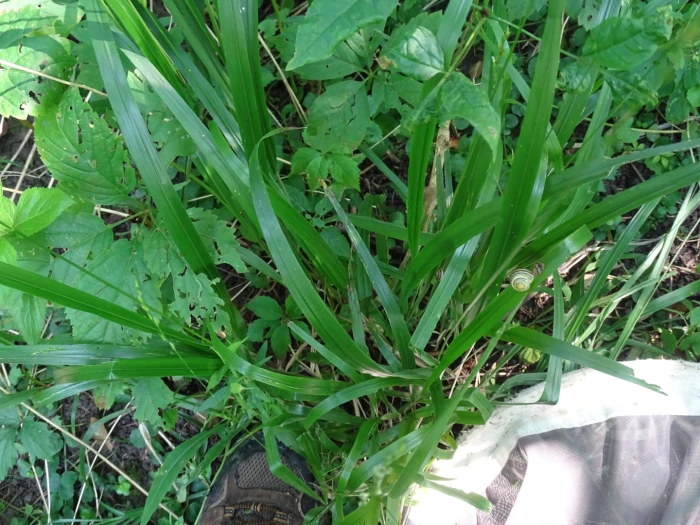American Beakgrain
(Diarrhena obovata)
American Beakgrain (Diarrhena obovata)
/
/

Reuven Martin
Public Domain
Image By:
Reuven Martin
Recorded By:
Copyright:
Public Domain
Copyright Notice:
Photo by: Reuven Martin | License Type: Public Domain | License URL: http://creativecommons.org/publicdomain/zero/1.0/ | Rights Holder: Reuven Martin | Publisher: iNaturalist | Date Created: 2018-08-04T15:42:56-07:00 |


































Estimated Native Range
Climate Requirements for Rancho Palos Verdes, California
| This Plant | Your Site | Plant Suitability for Your Location | ||
|---|---|---|---|---|
| • Precipitation | 29" - 49" | 16" | Your precipitation may be insufficient for this plant. Irrigate N" / year. | Irrigate N" / year |
| • High Temp. | 80°F - 96°F | 80°F | Your summer temperatures are normal for this plant. | Excellent |
| • Low Temp. | 3°F - 35°F | 46°F | OK, but your winter temperatures are warmer than normal for this plant | OK |
This plant should grow well at your location with about N inches per year (Y minutes per month) of irrigation.
Summary
Diarrhena obovata, commonly known as American Beakgrain, is a deciduous perennial grass native to rich, moist woods and stream banks in the Eastern United States. It typically grows to a height and width of 2-3 feet (0.6-0.9 meters), forming clumps of arching, bright green leaves. The plant produces inconspicuous, beak-like seed heads in late summer to early fall, which are not particularly showy but add a textural element to the garden.
American Beakgrain is valued for its adaptability to shade and its utility as a ground cover in woodland gardens or shaded areas where other grasses may struggle. It is also used for erosion control due to its clumping habit. This grass is relatively low-maintenance, requiring minimal care once established, and is not known to suffer from serious pest or disease problems. It is tolerant of a range of soil types, provided they are consistently moist, and it thrives in part shade to full shade conditions. While not aggressive, it can slowly spread by rhizomes to form a dense ground cover.CC BY-SA 4.0
American Beakgrain is valued for its adaptability to shade and its utility as a ground cover in woodland gardens or shaded areas where other grasses may struggle. It is also used for erosion control due to its clumping habit. This grass is relatively low-maintenance, requiring minimal care once established, and is not known to suffer from serious pest or disease problems. It is tolerant of a range of soil types, provided they are consistently moist, and it thrives in part shade to full shade conditions. While not aggressive, it can slowly spread by rhizomes to form a dense ground cover.CC BY-SA 4.0
Plant Description
- Plant Type: Grass
- Height: 2-3 feet
- Width: 2-3 feet
- Growth Rate: Moderate
- Flower Color: N/A
- Flowering Season: Summer, Fall
- Leaf Retention: Deciduous
Growth Requirements
- Sun: Part Shade, Full Shade
- Water: Medium, High
- Drainage: Slow, Medium
Common Uses
Erosion Control, Groundcover, Low Maintenance
Natural Habitat
Rich, moist woods and stream banks
Other Names
Common Names: Hairy Beakgrain, American Beak-Grass, Obovate Beakgrain, Beakgrass, Ovate Beakgrass, Diarrhène Obovée
Scientific Names: Diarrhena obovata, Diarrhena americana var. obovata
GBIF Accepted Name: Diarrhena obovata (Gleason) Brandenburg